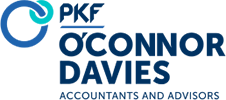Six Strategies
Key Takeaways
- A 13-week cash flow forecast supports short-term liquidity management and operational planning.
- Identifying liquidity opportunities helps improve cash flow stability and flexibility.
- Collaboration with financial advisors helps uncover opportunities and manage risk effectively.
By Eric Gelb, CPA, Partner and Joe Marchese, CTP, Partner
Many are familiar with the 13-week cash flow forecast as a critical tool during periods of financial stress — whether in the context of a business restructuring, turnaround or a looming liquidity shortfall. Often relied upon by C-suite executives, particularly chief financial officers, this forecast provides a forward-looking view of a company’s cash position. It details projected cash inflows and outflows, net available cash and any anticipated borrowings. More than just a reporting tool, the 13-week forecast is essential for informed decision-making and often forms the financial foundation for restructuring plans.
But the 13-week cash flow forecast is far more than a tool for crisis management. When applied proactively, it becomes a strategic framework for optimizing liquidity — freeing up cash that can be reinvested into growth initiatives or returned to stakeholders. It enables more informed decisions around investing, borrowing and capital allocation. With greater visibility into near-term cash needs, corporate executives can access capital more efficiently to support working capital, fund capital expenditures (CapEx), issue distributions to owners or even repurchase shares.
6 Strategic Steps to Improve Cash Flow and Liquidity
1. Build a 13-week cash flow forecast. Create a detailed, rolling 13-week forecast to analyze your short-term cash position. It will offer week-by-week granularity to improve visibility and control. Supplement with daily tracking for large or material disbursements.
2. Establish your starting cash position. Determine how much cash your business has today — across checking, savings and money market accounts. Then assess:
- How quickly those funds can be accessed (i.e., good funds).
- Any associated fees for liquidity (e.g., early withdrawal penalties on CDs).
3. Forecast inflows and outflows by category and timing. Develop a clear picture of expected cash movement:
Inflows
- Begin with near-term collections from accounts receivable.
- Layer in projections from forecasted sales and update based on timing and probability.
- Use financial metrics like Days Sales Outstanding (DSO) to refine estimates.
Outflows
- Start with known liabilities — vendor payments, taxes, payroll, debt service and CapEx.
- Prioritize critical vendors and obligations to maintain operations.
- Use historical patterns and metrics like Days Payable Outstanding (DPO) to forecast timing and amounts.
- Accelerate receivables and tighten credit policies.
- Reevaluate staffing levels or discretionary spending.
- Renegotiate vendor payment terms.
- Liquidate excess inventory or underperforming assets.
- Explore tax refunds, credits or incentives with your advisors.
- Diversify lenders or financing sources to reduce risk.
- Keep communication open with creditors — transparency often leads to collaboration.
- Consider refinancing, extending terms or restructuring repayments as needed.
6. Collaborate with advisors. Work closely with financial and strategic advisors to maintain and refine your cash management strategy. Their outside perspective and experience can help uncover overlooked opportunities and reduce risk.
Once you gain a clearer picture of your company’s working capital, you’ll be able to make more informed business decisions and communicate with banks, investors and vendors. This will put you in a stronger position to manage your business, increase your cash flow and improve your company’s profitability and financial strength.
Contact Us
If you need help preparing a 13-week cash flow, would like to know more about this topic or have questions, please contact your PKF O’Connor Davies client service team or:
Eric Gelb, CPA
Partner
egelb@pkfod.com | 914.341.7049
Joe Marchese, CTP
Partner
jmarchese@pkfod.com | 201.788.0798

